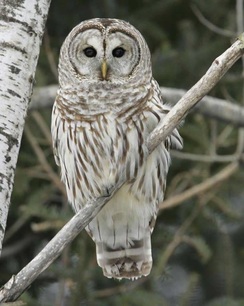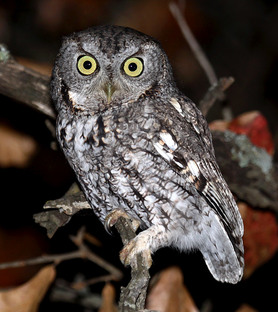There are 8 species of owls that can be found nesting in Pennsylvania. Three owls species that are commonly spotted in this region are barred owls, eastern screech owls, great horned owls.
Facts about Owls
- Owls will often regurgitate any of the bones, scales, and fur of their prey in the form of pellets.
- Most owls hunt small mammals, insects, and other birds (others hunt fish).
- A group of owls can be referred to as a parliament.
- Owls can turn their heads as much as 270 degrees.
- Owls have extremely powerful talons which help them hunt and kill prey.
- Owls are nocturnal.
- The feathers of an owl have a special adaptation to reduce noise so that they are able to sneak up on prey.
Location |
|


